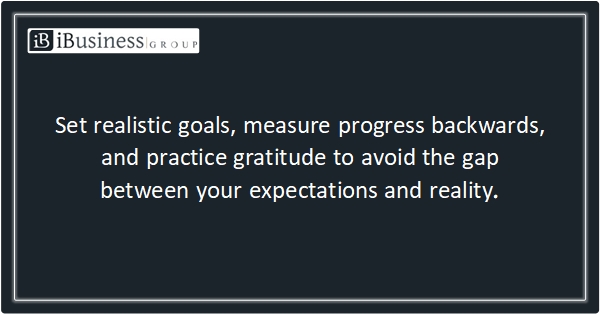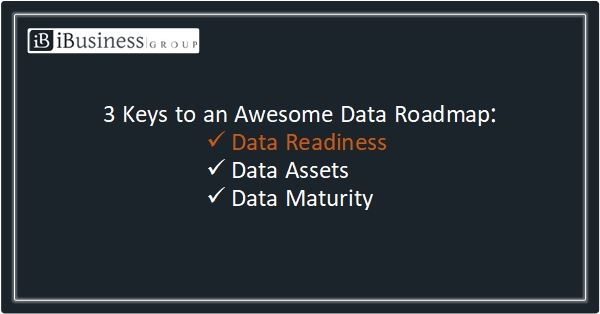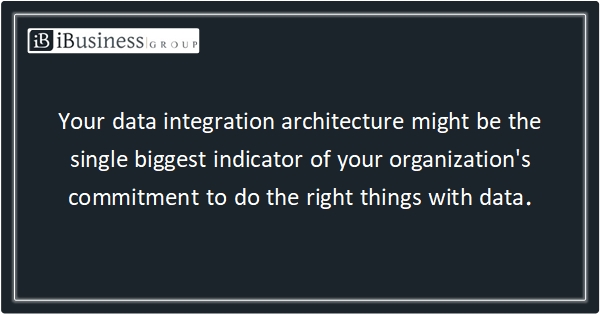As we enter a new year, it's natural to have high hopes and expectations for what the year will bring. We may have difficult or very big goals that we hope to achieve, or we may be starting something new with no benchmark to which we can compare, or maybe our biggest goals are intangible and hard to measure. With big, hairy, audacious goals that are hard-to-quantify, how can we stay focused, remain resilient, and make progress?
For me, January, 2023, brought high hopes, a fresh start, and an opportunity to leverage successes and learnings from the past. That month marked the official launch of The iBusiness Group, a 2.0 version of iBusiness Solutions that I founded in 1999. However, with new goals, a new year, a new company, or whatever "new" you have in your life, it is important for us to be mindful of the gap between our expectations and reality. If we set goals and expectations too high, we may find ourselves feeling disappointed or discouraged if things don't go as planned. On the other hand, if we set our expectations too low, we may miss out on opportunities and experiences that could bring us joy and fulfillment and create value for others.
So how can we avoid this gap and set ourselves up for success in the new year? Here are three practical ways to avoid the gap between our expectations and reality:
- Set realistic goals: It's great to have big goals and dreams, but it's important to be realistic about what we can realistically achieve in a given time frame. Dan Sullivan of The Strategic Coach has said there are no unrealistic goals, only unrealistic timelines. Unrealistic timeline expectations has always been a challenge for me. Consider breaking down large goals into smaller, more manageable steps or consider giving yourself more time to accomplish each step to make your goals more attainable.
- Measure progress backwards: In the world of data, we talk often of metrics and measuring progress. It is important to set future targets so we can visualize what we are aiming for. However, has we move through the year, it is important to measure backwards -- how far we have come -- rather than measure forward -- how far we have left to go. Measuring how far we've come is usually very encouraging. Measuring how far we have left to go can often be discouraging.
- Practice gratitude: It's easy to get caught up in what we don't have or what we wish was different, but practicing gratitude can help us stay grounded and appreciate what we do have. Taking time to reflect on the good things in our lives can help us stay positive and motivated.
So many goals related to data and analytics are very intangible -- a data-driven culture, data literacy, data maturity, data quality, and so many more. It can be difficult to put meaningful metrics on intangible goals or see measurable improvements. As a result, it is easy to get discouraged by a perceived lack of progress or by looking at how far there is yet to go. Conversely, by setting realistic goals with realistic timelines, measuring our progress backwards, and practicing gratitude for what we have accomplished, we can set ourselves up for success and avoid the gap between our expectations and reality.
What are your goals for the new year? Please share in the comments below or by email at timbrands@ibusinessgroup.us. If you would like help setting or making progress on your data and analytics goals, I would love to talk over a cup of coffee to encourage you and share any past experiences that might be relevant to your journey. I wish you a blessed new year.





